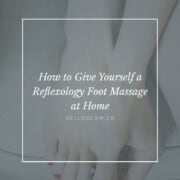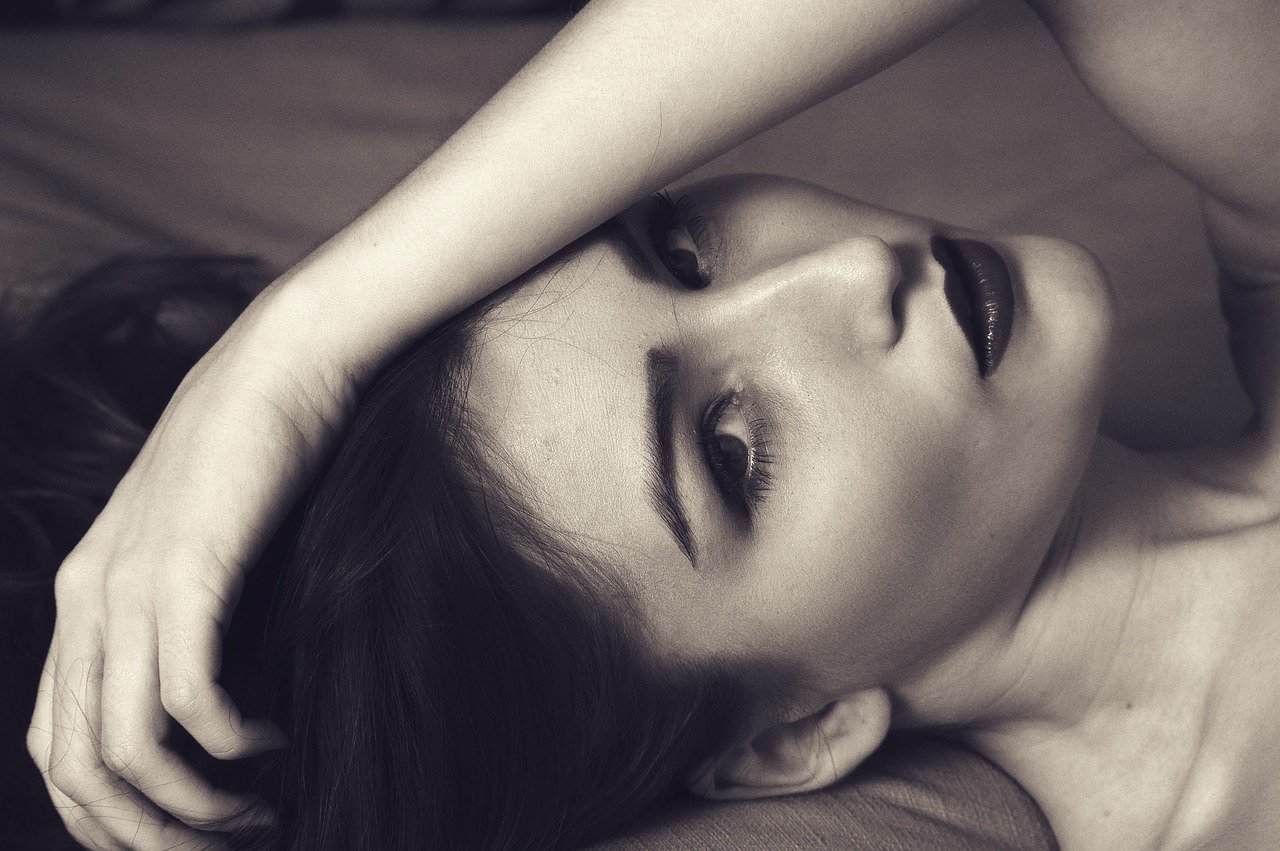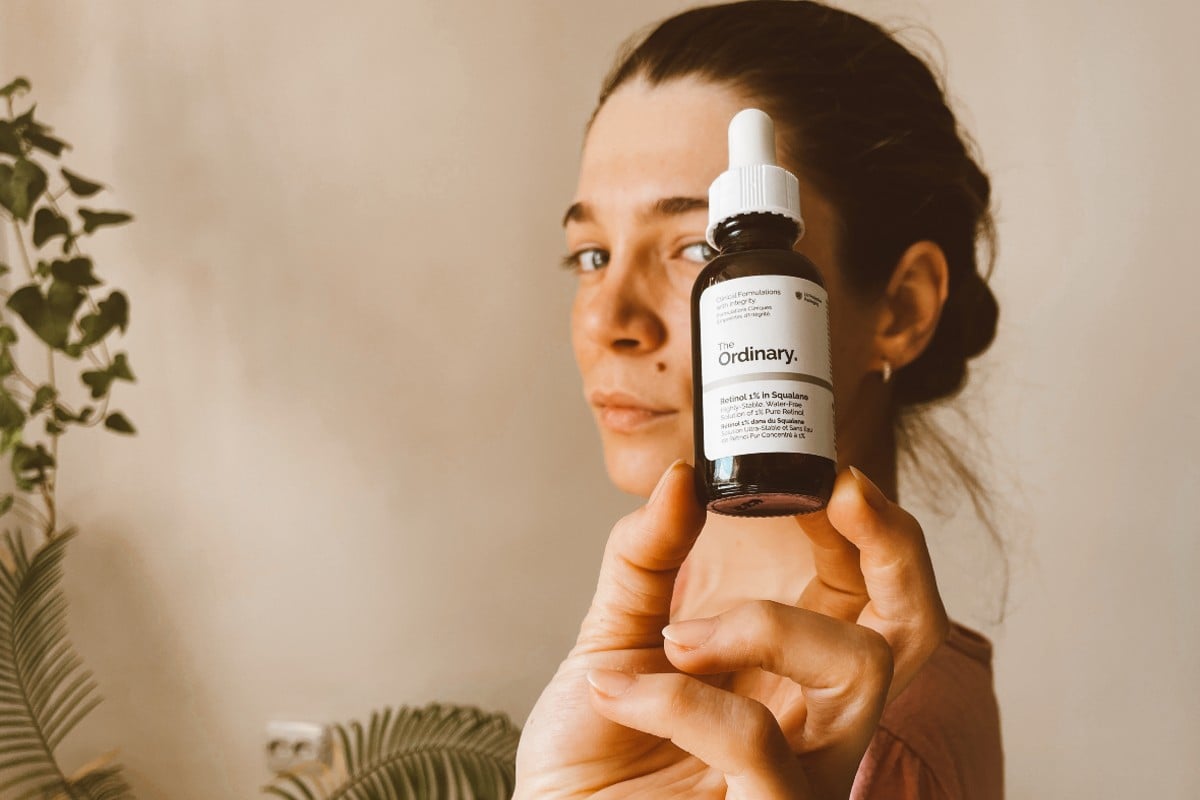Table of Contents
Break out the peppermint foot lotion—it’s time to give one of the most unloved parts of your body a little TLC with the help of a reflexology massage. For starters, some fresh nail polish, a little moisturizer, and a 5-minute foot massage can make you feel like a whole new person. (That’s just Self-Care 101.)
But incorporating reflexology into your routine has full-body benefits to boot. Targeting specific reflex points can boost circulation, soothe headaches, improve digestion, and release tension. Oh, and it feels blissful!
Read on to learn how to do a DIY foot massage with reflexology.
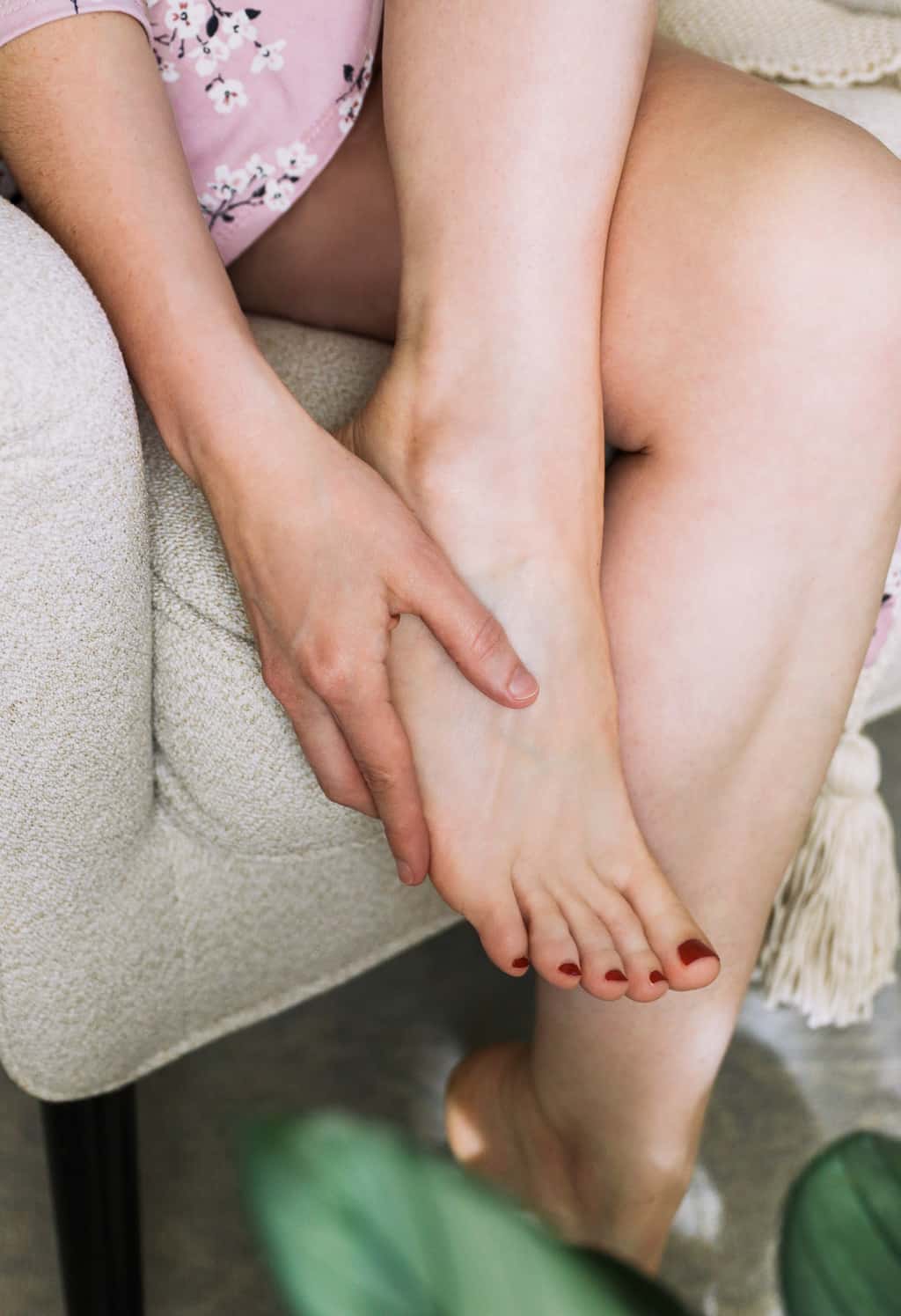
Jump to:
Benefits of Reflexology
Reflexology is a therapy from traditional Chinese medicine based on the theory that certain reflex points on the body represent functions in their associated organs. So when you stimulate the reflex point for the kidney, for example, it sends vital energy to balance that organ and its function. These energy grids become blocked when a disease is present, and reflexology massage helps open them up, restoring the flow of energy to their respective organs [source].
While studies showing that reflexology definitively works are small in number, and its mechanism hasn’t been formally established, the practice has been used successfully to benefit patients in many areas of the world [source]. At the very least, a regular foot massage can help relax the body, which lowers the heart rate, reduces muscle tension, and relieves anxiety.

That being said, reflexology is often used to:
—Reduce headaches
—Reduce stress [source]
—Soothe PMS symptoms [source]
—Encourage the elimination of toxins
—Relieve hot flashes and night sweats [source]
—Improve digestion
—Increase circulation
—Positively affect some chronic health conditions [source]
—Improve concentration
—Treat some forms of sexual dysfunction [source]
—Improve sleep and fatigue [source]
—Help with depression [source]
—Relieve pain and anxiety [source]
—Improve health and well-being [source]
Not to mention, massage can help improve many foot-related ailments, such as bunions, foot ulcers, gout, soreness, and circulatory problems.

It’s important to learn the fundamentals for doing a proper reflexology massage.
Foot reflexology is based on the idea that nerve endings in the feet are directly connected to other parts of the body. By using pressure or massaging the nerves within a particular reflex point in the feet, you may be able to relieve symptoms, improve blood flow, and reduce pain in the associated area of the body. For instance, the big toe is said to be related to the pituitary and hypothalamus glands, and massaging it can help with hormone imbalances.
The foot is usually divided into a dozen different areas or “zones.” While a foot massage will automatically target many of the pressure points in the feet, you can use a reflexology foot map to show you how to target specific issues by focusing on their associated zones [source].
Some tips:
—Before you get started, try rotating your ankles to the right and left to relax the joints and relieve stiffness.
—While it’s not totally necessary, a luxurious foot cream or nourishing oil can help your fingers glide across skin and soften dry, calloused spots.
—Reflexology traditionally uses a technique called thumb walking to stimulate the points. Start by applying moderate pressure to a point with your thumb, then make small circular motions and shuffle your thumb a step forward. Slowly walk your thumb to stimulate both the point itself and the surrounding zone.
Truthfully, I don’t always use thumb walking and instead, just drag my thumbs over the skin to activate the pressure points in a shorter amount of time.
Basic Reflexology Massage
Put on loose, comfortable clothes that you can move around in. Take off your socks, and make sure to have some foot lotion or a good massage oil at the ready.
Step 1 | Relax
Start by sitting cross-legged in a comfortable chair or on the floor. Before targeting specific points on the feet, I recommend gently massaging the whole foot to boost circulation and help you relax. If you have foot lotion, apply a little to your fingertips and rub it into the bottoms of your feet.
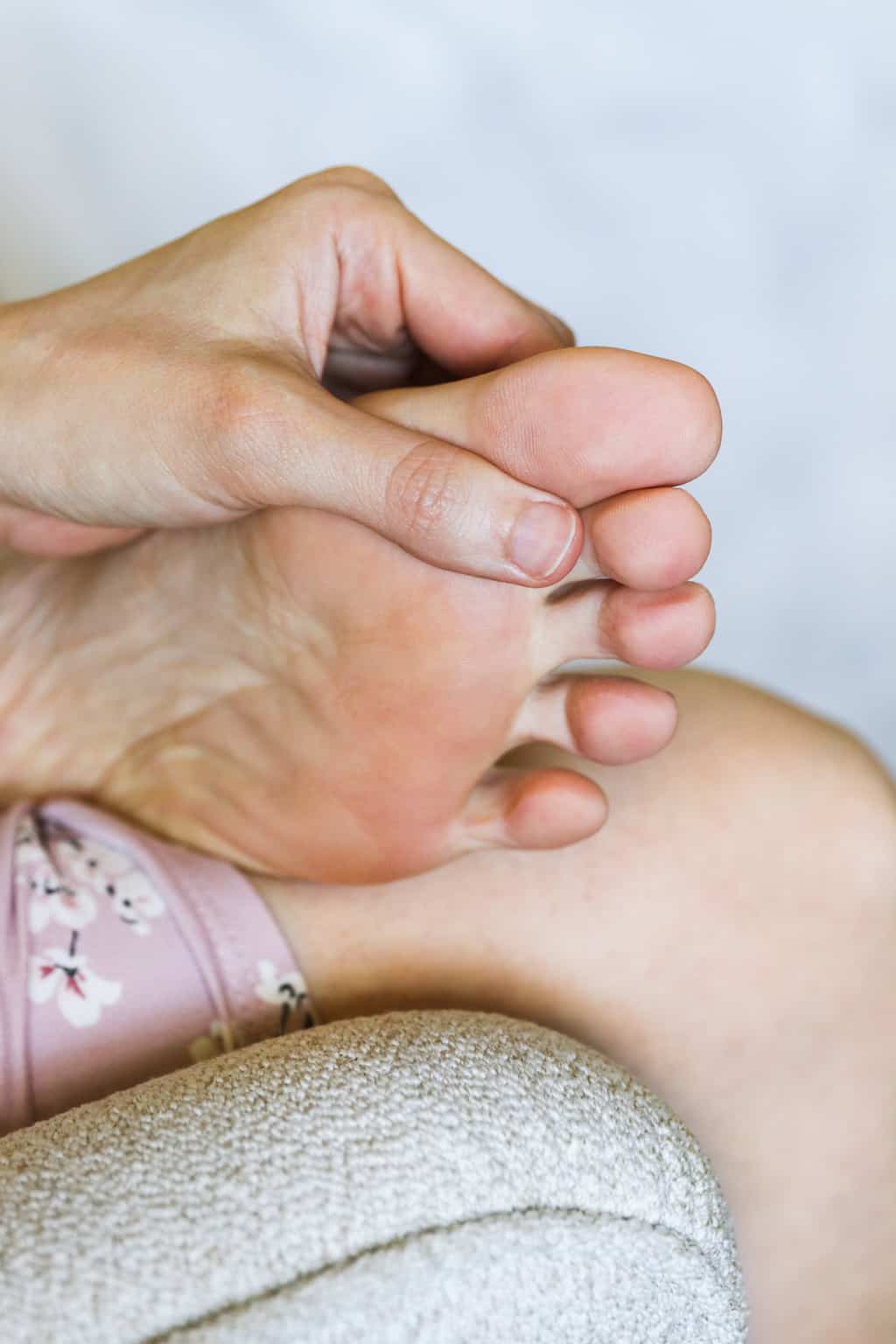
Step 2 | Relieve neck tension
Starting with the second toe, apply gentle pressure to the joint at the base of the toe to help relieve head and neck tension. Massage in short, circular motions for about 10–15 seconds before moving on to that joint in the next toe.
Continue massaging those same joints for all 8 toes, one at a time, until you feel the tension in your neck dissolve.
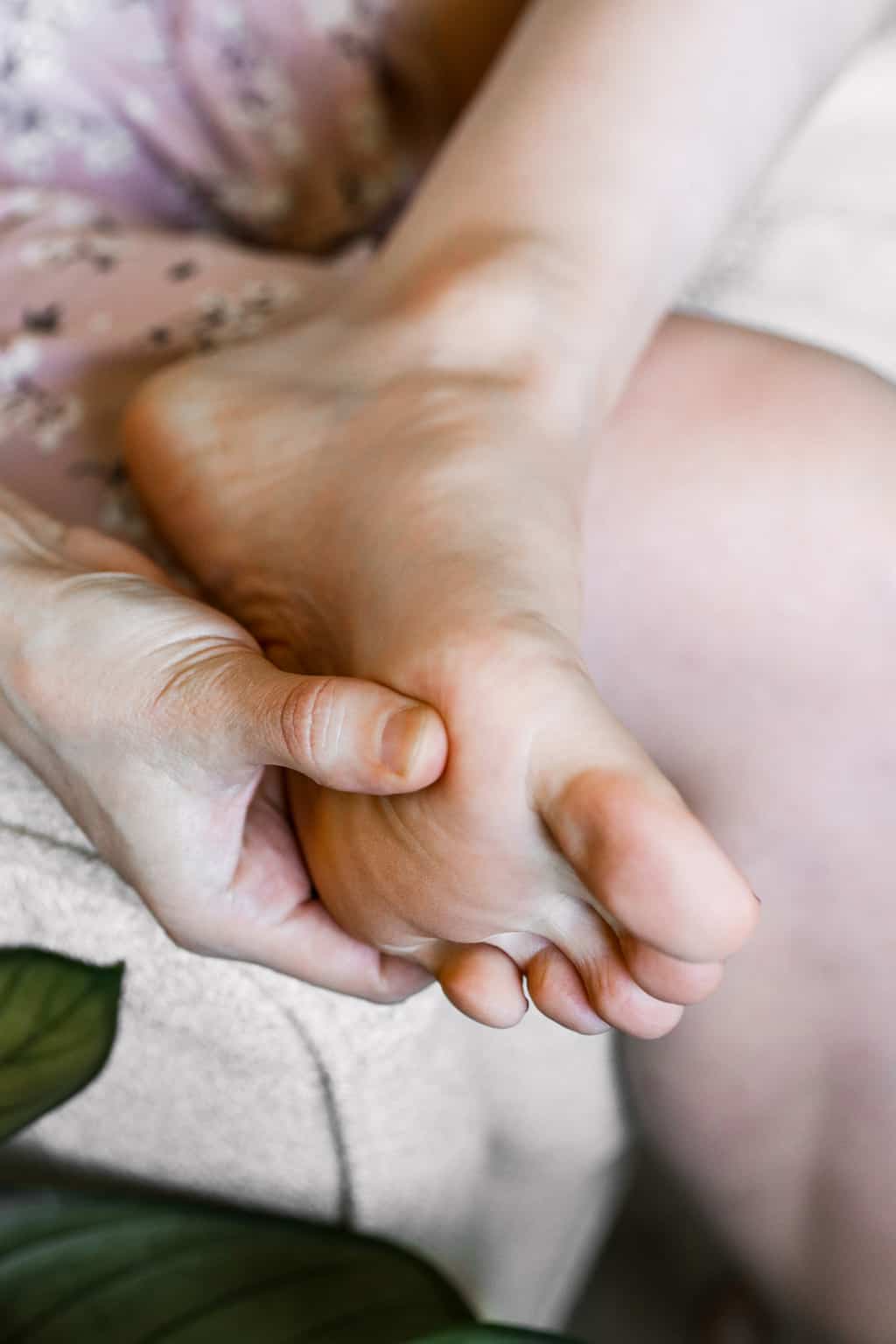
Step 3 | Release stress in the chest
When we feel stressed, one of the first places we feel it is in the chest area. To release tightness in the chest, use your thumb to apply pressure to the ball of your foot. After about 15 seconds, slowly walk your thumb around the entire pad of the foot to relax the shoulders, lungs, and thymus gland.
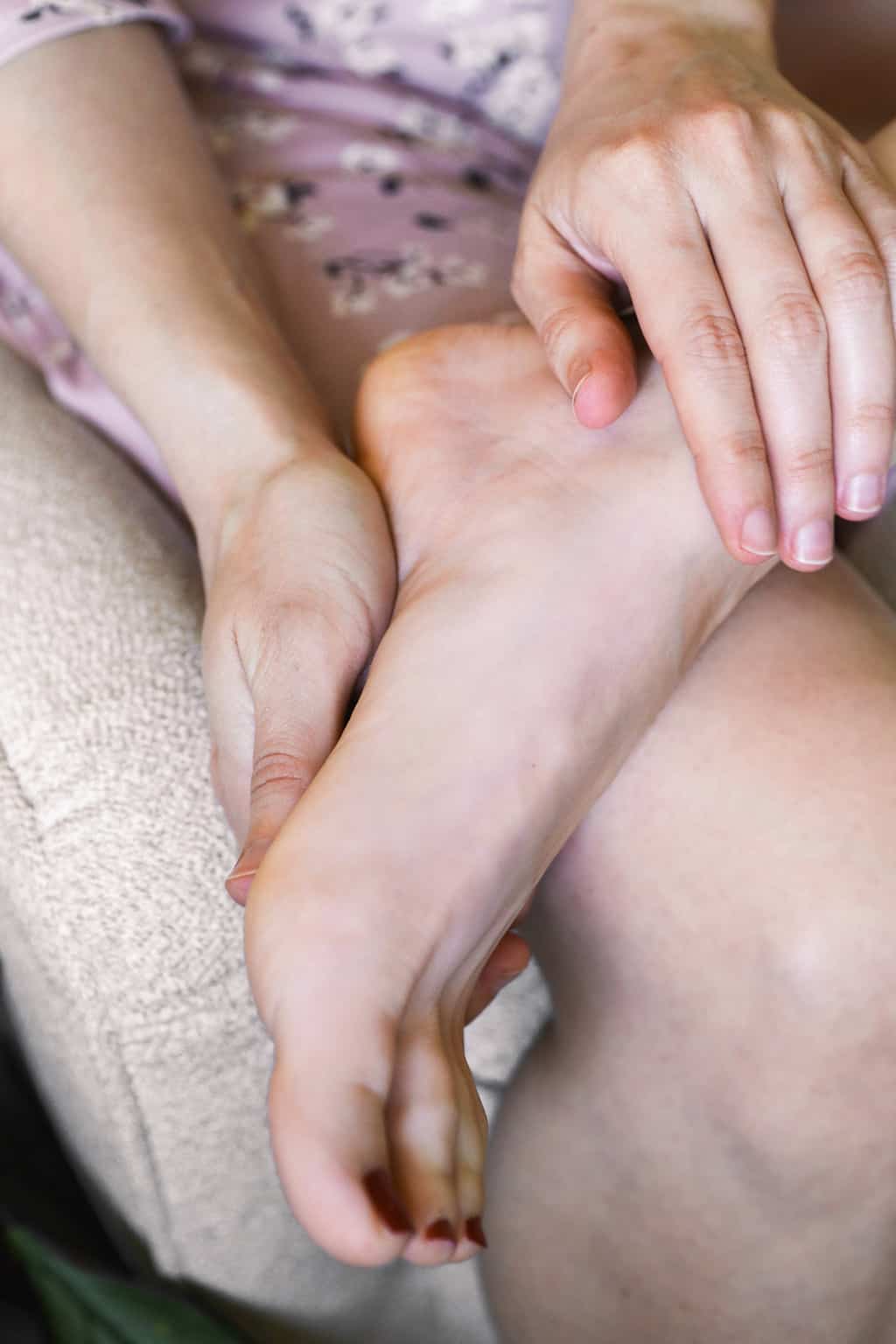
Step 4 | Improve digestion
Stress often shows up in the form of digestive discomfort. To relieve stress in the stomach area and improve digestion, use both thumbs to stimulate the reflex points on the instep.
After walking your thumbs along your instep, add in a few long strokes to help soothe the stomach and release tension.

Step 5 | Relax stiff muscles
If the muscles in your arms, legs, and shoulders feel tight, use your thumb to massage along the edge of the foot.
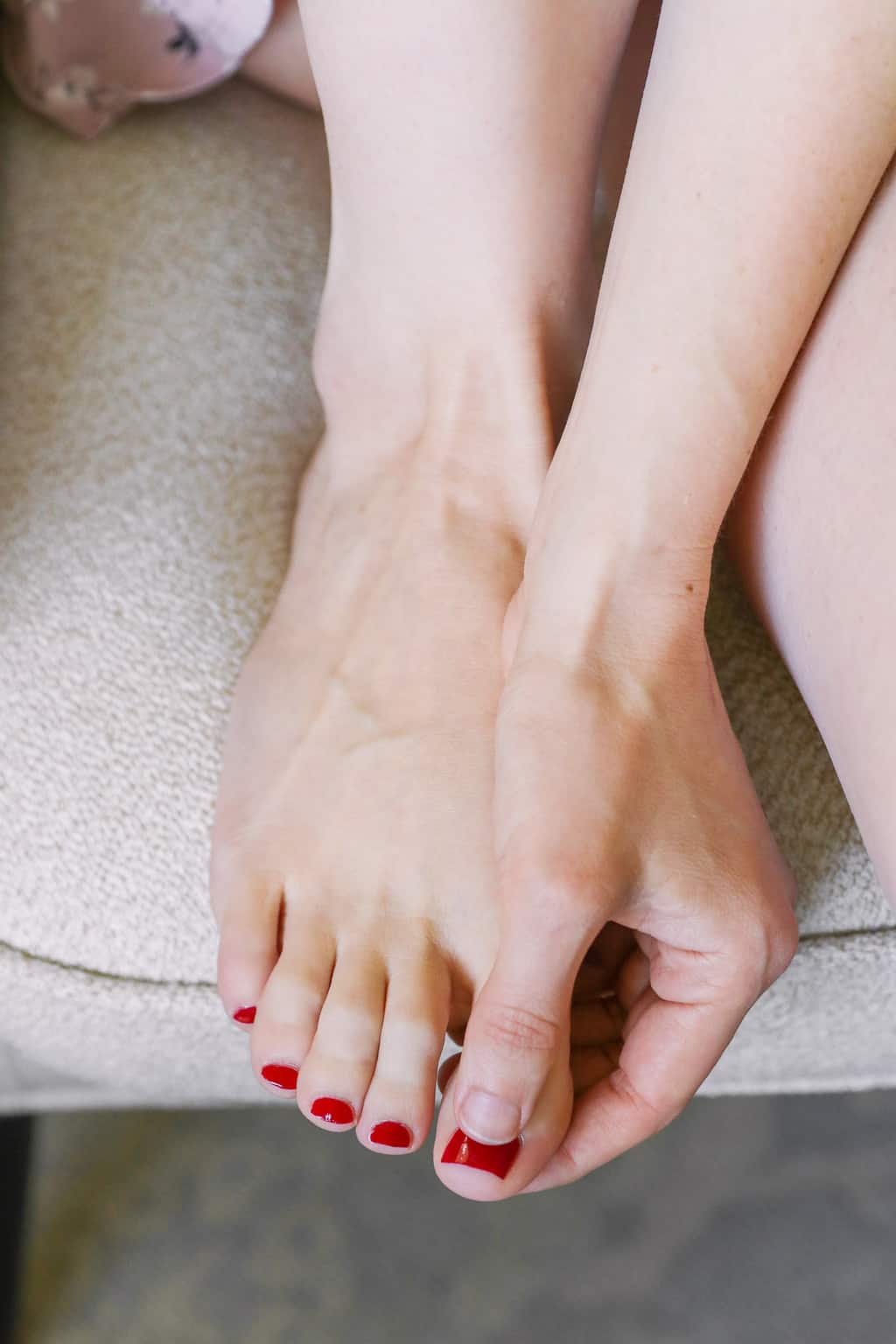
Step 6 | Clear the sinuses
Lastly, massage the pads of the toes and the toenails to help clear the sinuses and relieve congestion.
When you’re done, repeat the massage with the other foot. In reflexology, the left foot stimulates the left side of the body, while the right foot stimulates the right side of the body. So it’s important to work on both feet.
This massage covers many of the most common ailments we run into on a daily basis, but you’re free to customize it to meet your needs. If you have other issues you’d like to tackle, check out the foot map and add those specific zones to your routine.
Repeat this reflexology massage as often as you like.
Embong NH, et al. Revisiting reflexology: concept, evidence, current practice, and practitioner training. J Tradit Complement Med. 2015.
Hasanpour N, et al. Effects of reflexology on premenstrual syndrome: a systematic review and meta-analysis. Biopsychosoc Med. 2019.
Gozuyesil E, et al. The effect of foot reflexology applied to women aged between 40 and 60 on vasomotor complaints and quality of life. Complement Ther Clin Pract. 2016.
Song HJ, et al. Self-administered foot reflexology for the management of chronic health conditions: a systematic review. J Altern Complement Med. 2015.
Zeidabadinejad S, et al. Effect of foot reflexology on sexual function of patients under hemodialysis: a randomized parallel controlled clinical trial. Evid Based Complement Alternat Med. 2021.
Unal KS, et al. The effect of foot reflexology and back massage on hemodialysis patients’ fatigue and sleep quality. Complement Ther Clin Pract. 2016.
Want WL, et al. Effect of foot reflexology intervention on depression, anxiety, and sleep quality in adults: a meta-analysis and metaregression of randomized controlled trials. Evid Based Complement Alternat Med. 2020.
Moghimi-Hanjani S, et al. The effect of foot reflexology on anxiety, pain, and outcomes of the labor in primigravida women. Acta Med Iran. 2015.
McCullough JEM, et al. The physiological and biochemical outcomes associated with a reflexology treatment: a systematic review. Evid Based Complement Alternat Med. 2014.
This article was medically reviewed by Dr. Gina Jansheski, a licensed, board-certified physician with over 20 years of experience in practice. Learn more about Hello Glow’s medical reviewers here. As always, this is not personal medical advice, and we recommend that you talk with your doctor before using this recipe to determine what’s best for you.
Interested in more ways to give yourself a massage? These posts will lead the way:

